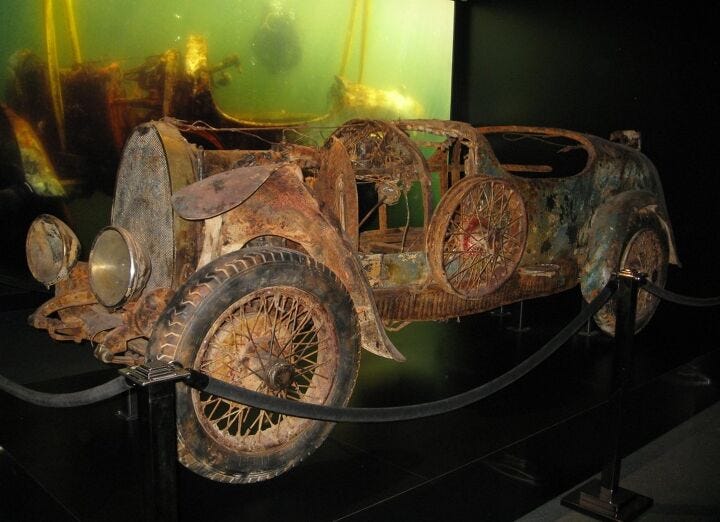I’ve been thinking about collections lately.
If you go to as many car shows as I do, you run into people who own substantial collections. When I do run into someone who has more than a couple of cool cars, I’ll often ask them which is their favorite. Sometimes they’ll start their answer with, “Well, that would be like asking me which is my favorite…,” and I’ll shut them off right there. “Please don’t compare your children with an inanimate object.”
I have a few collections myself, about 30 guitars that I can’t play, some vintage solid-state guitar amps just because anyone can lust after an all-tube ‘59 Fender Bassman and I think that I’m special, a bunch of harmonicas that belonged to and were autographed by great players, and lots of books, records, and CDs.
Peter Mullin owned what was likely the largest collection of vintage Bugattis and other historically important pre-war French luxury cars anywhere outside of France. He built a museum and adjacent restoration shop in Oxnard, California to restore and display his cars (or in some significant cases, leave them as they were found). Peter Mullin died in September, 2023. By the following spring, barely a half year later, his family donated or sold off much of the collection in two auctions.
Ken Fritz owned a polymer tooling company and spent 27 years and an estimated $1 million building a custom 35,000 watt home stereo system, included a dedicated, acoustically treated and mass-dampened room to house it. It also came at the cost of his relationship with his children, who sold off the equipment for pennies on the dollar, just $156,000, after Fritz died of complications from ALS.
Building the ultimate stereo came at a great cost to Fritz’s family relationships.
Fritz frequently required his five children to assist with the construction and assembly. So, turning their family home into a sound lab meant his children spent many hours helping out for free.
“My dad had a workshop. We were forever building, rebuilding.” said Rosemary, his youngest daughter.
The project also made family relationships difficult, especially with his son Kurt, who moved away to get away from the stressful setting.
“Growing up, I had to get up at 6 in the morning to work. I basically was his slave,” Kurt said.
Because the family was so involved in Ken’s project, they missed out on regular activities like vacations and trips.
Patty, one of Ken’s daughters, pointed out how it affected their social life.
“Nobody wanted to come to our house, because he wanted to put them to work.” she said.
“I think we went camping twice, never took vacation. It was just work, work, work.”
This strain in the relationship wasn’t a secret to Fritz. In an interview, he also admitted that his obsession with his system has prevented him from being an active father.
“I was a father pretty much in name,” Fritz said. “I was not a typical father or a typical husband.”
As Fritz’s health worsened quickly after his ALS diagnosis in 2016, he worried over the fate of his life’s work. By April 2022, he required a hospital bed on his home’s ground floor due to his declining mobility.
“I’d hate like heck to see this room parted out,” he said in 2018. “That’s just like breaking up a dream.”
Dale Watts was a Detroit area attorney who was successful enough to own a house in the affluent suburb of Franklin and amass a collection of more than 300,000 comic books worth millions of dollars including a 1939 Superman #1 estimated to be worth $3.5 million just by itself.
The collection, a symptom of Watts’ autism, lead to his divorce from his wife Celeste and a strained relationship with his two sons.
The inheritance also came with a lifetime of secrecy, painful memories and unresolved feelings that felt more like a burden than a bequest.
Documentary filmmaker Adam Schomer, who went to high school with one of Watts’ sons, is exploring the story in a documentary series, “Selling Superman.”




Pity the man who is owned by things, rather than the reverse.
This reminded me: Ronnie, where can I find the piece that you wrote about the estate auction of a Cord 812(?)
The man, an engineer, had carefully saved every part removed in favor of an upgrade and also painted the new parts in uniform color to distinguish his alterations. He had owned the car since before marriage and the children, IIRC. Was that for TTAC?
A very good point as this is not just a rich man's dilemma .
-Nate